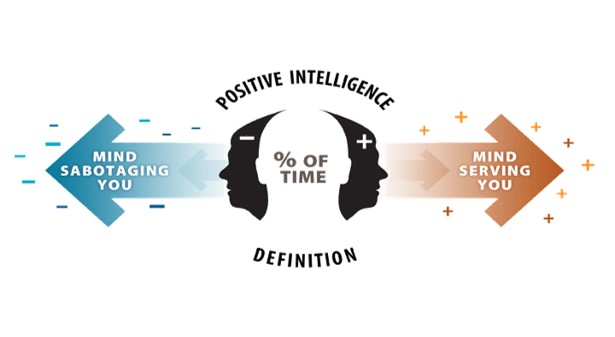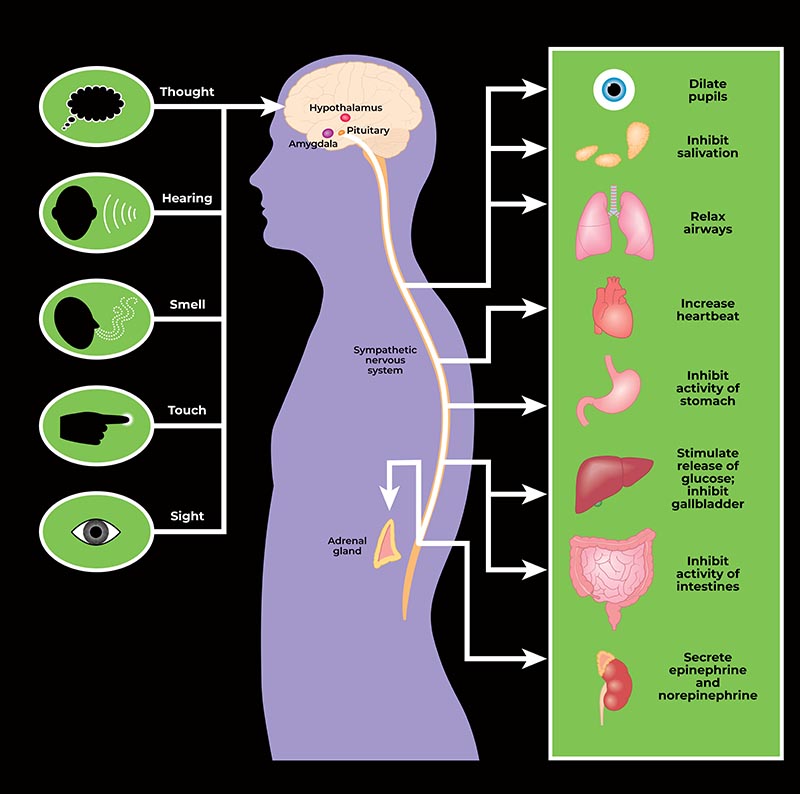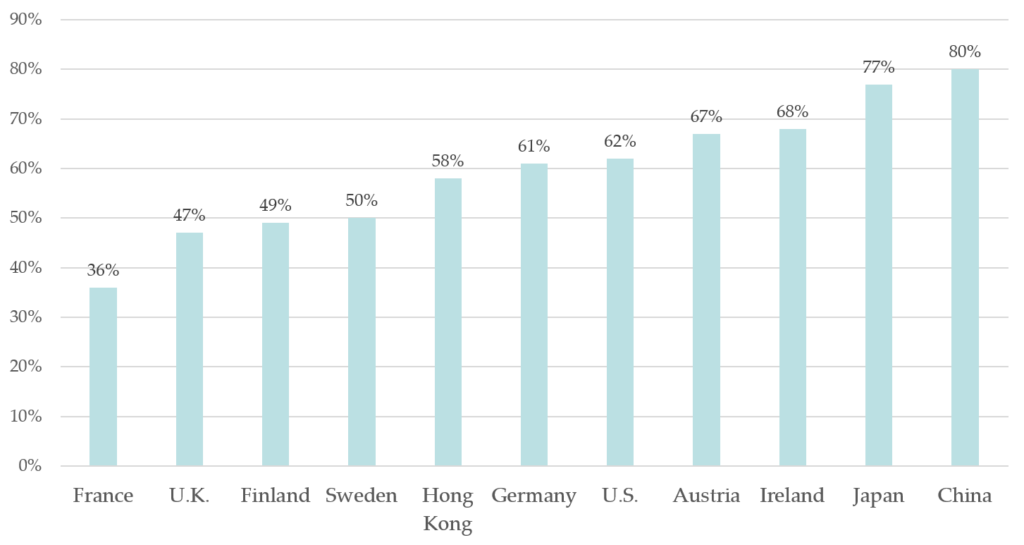Many people struggle with asking for help. It just doesn’t feel right, or it goes against their nature.
This fits with a narrative we’ve been fed all our lives. In our culture, we tend to worship the self-made man or woman. We’re told to pull ourselves up by our bootstraps (a truly ridiculous phrase, if we stop to think about it).
Perhaps we grew up admiring the Lone Ranger, Superman, Ironman, or Wonder Woman. It’s part of U.S. history, with the rugged individualism and self-reliance inherited and lionized from the frontier days of the Wild West.*
We value being independent and self-sufficient, a grinder who can push through hardship and get things done.
There’s surely value in much of this, but it comes with a hefty price. If we’re reluctant to ask for help, it can get us into big trouble in life by keeping us stuck or slowing down our advances.
Asking for help is an important life skill, work skill, and leadership skill. Those who struggle with it are wise to address it urgently.
“I respect and value the ideals of rugged individualism and self-reliance. But rugged individualism didn’t defeat the British, it didn’t get us to the moon, build our nation’s highways, or map the human genome. We did that together.”
-Cory Booker, U.S. Senator, former Mayor of Newark
The Problem with Not Getting Help
When we fail to reach out and ask for help, we’re more likely to get and stay stuck. We’re more likely to struggle with overwork and burnout. And we’re bound to experience the emptiness of going it alone.
It can prevent us from maintaining closeness with friends and family. When we let our relationships and social ties lapse, it reduces our happiness and can lead to anxiety or depression.
Types of Help
Since many people aren’t accustomed to seeking and accepting help, they may not be clear on the many distinct types of help available to them. For example, types of help we can receive include:
- listening as we process difficult emotions
- sharing their experience with similar challenges
- brainstorming potential solutions
- serving as a sounding board
- providing input and feedback
- reviewing our work for errors or things we’ve missed
- encouraging us to stay the course despite challenges
- giving advice or counsel
- teaching us a new skill
- asking tough questions
- holding us accountable to our commitments
- introducing us to people who can help
At any given time, any one of these can be significant. We’re wise to be open to them so we can operate at our best.
What Prevents Us from Asking for Help
We may “get” the conceptual case for seeking help, but that doesn’t make it easy to do. There are many reasons we may be reluctant to do so, including that we:
- don’t want to feel stupid or embarrassed
- are too proud
- don’t want to be a bother
- are too shy
- would rather just figure it out on our own
- are afraid of appearing weak, stupid, or incompetent (at work here is the deeply mistaken belief that vulnerability is weakness)
- fear rejection
- worry about losing status (e.g., tarnishing our image of being a go-getter) or control
- don’t want to feel beholden to others
- believe we don’t deserve help
Sometimes, we can trace one or more of these common thoughts and feelings to a source. For example, maybe someone criticized or belittled us as a kid when we asked for help. According to Deborah Grayson Riegel, coauthor of Go To Help: 31 Strategies to Offer, Ask For, and Accept Help, “starting at about seven years old, we start to associate asking for help with reputational costs. We’ve been conditioned to think ‘They’re going to think I’m dumb/bad/lazy/weak if I admit I need help.’”
Additionally, we may have inherited a personality trait that makes it difficult to ask for help. For example, perfectionists often insist on doing everything on their own because they feel strongly that things must be done a certain way and believe it’s better just to do it all themselves—even though that often makes them a bottleneck and prone to overload.
Our mindset is also relevant here. Dr. Carol Dweck, a Stanford University psychologist, distinguishes between a “fixed mindset” (in which we believe our intelligence, abilities, and talents are static and fixed) and a “growth mindset” (in which we believe we can develop them). A fixed mindset, she argues, leads to a desire to look smart in front of others, making it harder for us to ask for help.
Our personal core values can also get in the way. Those who have self-reliance as a core value, for instance, may pride themselves on being able to manage things on their own. Or perhaps we identify as a high-performer and overachiever and feel like it’s beneath us to ask for help, or we’re a martyr and wish to make others feel guilty for our suffering.
Cultural influences are also relevant. Many Western societies value individualism, as do many families and organizations. It’s part of their ethos. People don’t want to ask for help in cultures where it’s looked down upon.
Finally, we often misjudge how others will respond to our requests. According to a 2022 study by researchers Xuan Zhao and Nicholas Epley published in Psychological Science:
“Those needing help consistently underestimated others’ willingness to help, underestimated how positively helpers would feel, and overestimated how inconvenienced helpers would feel…. Undervaluing prosociality could create a misplaced barrier to asking for help when needed.” **
There’s research indicating that serving others may promote feelings of happiness, increase social connection and self-esteem, lower stress levels and blood pressure, and promote longevity. *** In other words, when we ask for help, in some ways we’re helping those we’re asking, because it allows them to do things that help them enjoy life and thrive. It’s called the “helper’s high.”
“The person who is being asked to help also gets a huge benefit from being in that position. They are strengthening social ties and they are able to feel generous. Asking for help is quite generative for both parties.”
-Dr. Pooja Lakshmin, M.D.
At the World Economic Forum, Bill Gates said, “there are two great forces of human nature: self-interest, and caring for others,” and we’re most successful when we’re driven by a “hybrid” engine of those two forces.
The Benefits of Seeking Help
Getting good at asking for help can lead to big wins in our life and work, because it can affect so many things. For example, it can help us deepen our relationship with others, because asking for help involves courage, vulnerability, authenticity, and trust, which are powerful connecting forces in relationships.
“We cultivate love when we allow our most vulnerable and powerful selves to be deeply seen and known, and when we honor the spiritual connection that grows from that offering with trust, respect, kindness, and affection.”
-Brene Brown, researcher, speaker, and author
Asking for help can help us gain clarity on the issue at hand as we describe it to others. It can set up a powerful dynamic of reciprocity that benefits all. And it can inspire others to stop going it alone and ask for help more as well.
In her book, Daring Greatly, Brene Brown recounted the personal implications of this in her life:
“…my greatest personal and professional transformations happened when I started asking hard questions about how my fear of being vulnerable was holding me back and when I found the courage to share my struggles and ask for help…. I also learned that the people who love me, the people I really depend on, were never critics who were pointing at me while I stumbled. They weren’t in the bleachers at all. They were with me in the arena. Fighting for me and with me…. Sometimes out first and greatest dare is asking for support.”
How to Get Better at Asking for Help
Though it’s sometimes hard to ask for help, thankfully there are many things we can do to develop this valuable skill. For example, we can:
- recognize that asking for help is a strength, not a weakness, because it means we’re committed to our goals and confident enough to demonstrate some vulnerability
- consider that the alternative (not asking for help) means continuing our frustration or suffering
- recognize that nobody succeeds in life without the help of many people from different areas of life (e.g., parents, teachers, coaches, mentors, friends, even rivals sometimes)
- recognize that our fears about asking for help (e.g., that we’ll lose status) are misplaced, given all the research on how people underestimate others’ willingness to help
- recall that most people like to help others, as it makes them feel good
- evaluate whether it’s a good time to ask for help, given that most people tend to wait too long to do so (good things to consider include how much time we’ve already spent on the issue at hand, whether we have the time to keep working on it alone, whether it’s something we’re good at solving, and whether there are better uses of our time and energy)
- trust others to set boundaries for themselves and say “no” if warranted
- flip the script and recall times when people asked us for help and whether that made us feel burdened and resentful or glad to be asked and happy to help
- consider the worst-case scenario (i.e., the person refuses to help or can’t right now, and perhaps we feel awkward for a bit)
- tally the potential benefits of getting help (e.g., having more bright people working on potential solutions or sharing how they’ve solved a similar problem, as well as the support and solidarity that may arise)
- start small when first learning to ask for help, and build out from there (this will make it more manageable and less likely that we’ll abandon it)
- share with others that we struggle with asking for help but want to improve (this will make it easier to ask when the time comes and help us be accountable for improving)
- set a target for how many “asks” we’ll make in a week or month—and keep track
Things to Do When Making the Ask
Sometimes it’s helpful to address the mechanics of how exactly to go about asking for help. Here are some tips:
Do substantial initial work and thinking on the issue before turning to others. Don’t be the person who goes straight to asking others without putting in some initial thought or work, as that can drift into taking advantage of them. Sometimes, Google and YouTube searches can go a long way.
Ask in person or by videoconference or phone and not email or text, if possible. That will help make it more personal. (According to the research, in-person requests are much more successful anyway.)****
Provide enough information and context for the person to make an informed decision about whether and how they can help. The more clarity and transparency upfront, the better.
Respect their time, expertise, context, and preferences.
Be specific on what the ask is and isn’t, with clear boundaries, including why it matters to us and how we think the person we’re asking can contribute. Many experts recommend making what they call “SMART” requests for help, an acronym that stands for Specific, Meaningful, Action-oriented, Realistic, and Time-bound. The clearer we can be on exactly what kind of help we want and need, including the time and resources involved, the better. But even while we make our requests specific, we should be open to new information as we learn what people know, who they know, and how they can help. Let the people we’re asking for help decide how much help they can offer (or not)—and how.
Don’t apologize for asking and don’t minimize the request. That can take away from the other person’s generosity. Be straightforward and matter-of-fact.
Don’t emphasize reciprocity when making the ask. By promising a return favor, we risk turning the request from altruistic and noble to transactional.
Follow up afterward to thank them and let them know how things went (and, ideally, what impact they made).
Watch out for the “illusion of transparency” (the mistaken belief that our thoughts, feelings, and needs are obvious to others). Don’t expect people to read our minds about what we want and need. Also, watch out for the “curse of knowledge” (when better informed people find it difficult to adopt the perspective of others—or subconsciously assuming others know what you know about a topic or situation).
Recognize that it can take time to become comfortable with and good at asking for help, because old habits die hard. We can surely get better at it with practice. According to Dr. Wayne Baker, faculty director of the Center for Positive Organizations and the University of Michigan’s Ross School of Business, “You’re working to become desensitized to the fear of what might happen when you ask for help.”
Develop this practice into a habit, not a one-and-done activity.
Ensure this is reciprocal. If we want help from others, we must be willing to give help—and sometimes actively to seek ways to help others (but without being needy about it). Ideally, we can earn help from others by being a helpful person—not just once but consistently over time. Still, someone has to start the cycle of helping first, which means that someone needs to receive help first.
Try a “reciprocity ring,” a fun and rewarding approach created by Wayne and Cheryl Baker. In such a ring, a group convenes so that each person can ask for something they need and can’t easily get or do themselves. As each person takes a turn articulating their request, the others think about the resources they might have to help. They can make as many offers of help as they like. Even if they can’t help personally, they can connect the person to someone in their network who might be able to help. Such a practice is powerful because reciprocity is hardwired into our brains, and it can normalize the act of asking for help.
Implication for Leaders
Leaders are wise to create a culture in their team or organization in which asking for help is not only encouraged and common but also rewarded. At IDEO, designers receive coaching on this and executives model it. And at Zingerman’s, a Midwestern food company, all attendees at the induction of new managing partners state what they’ll do to help each new partner succeed. The company’s founding partners participate as well, sending an important message from the top.
Notably, asking for help can help reduce burnout levels in organizations. A global study conducted by Rebecca Zucker from Next Step Partners found that lack of help-seeking was one of the top two predictors of feeling overwhelmed at work. Those who don’t ask for help, she found, scored 23% higher on overwhelm.
Conclusion
For many, asking for help is difficult—and one of the most important skills we can develop because of the connections and breakthroughs it can engender.
Be patient with this process. It may take time, because it involves unlearning old habits. But it’s well worth it.
“If I can leave you with only one piece of advice to increase your probability of creating an earned life, it is this:
Ask for help. You need it more than you know.”
-Marshall Goldsmith, The Earned Life
Reflection Questions
- Are you in the habit of powering through adversity without asking for help—or even considering it?
- Do you wait too long before seeking help, wasting precious time along the way?
- In what areas are you comfortable asking for help?
- In which cases did you not ask for help when you should have, and why?
- What will you do today to develop this important skill?
Tools for You
Related Traps & Articles
Postscript: Inspirations on Seeking Help
- “Going it alone in times of hardship is never a good idea.” -Jonathan Rauch, The Happiness Curve
- “When we were children, we used to think that when we were grown up we would no longer be vulnerable. But to grow up is to accept vulnerability. To be alive is to be vulnerable.” -Madeleine L’Engle, writer
- “Until we can receive with an open heart, we are never really giving with an open heart.” -Brene Brown, The Gifts of Imperfection
- “Isolation is fatal…. The burden of going it alone is heavy and limiting—and potentially dangerous…. In fact, social isolation can take up to seven years off of your life. Isolation contributes to heart disease and depression; it influences your immune system and leads to faster aging and advanced health problems.” -Richard Leider and Alan Webber, Life Reimagined
- “Economists call it the warm glow of giving, and psychologists call it the helper’s high. Recent neuroscience evidence shows that giving actually activates the reward and meaning centers in our brains, which send us pleasure and purpose signals when we act for the benefit of others. These benefits are not limited to giving money: they also show up for giving time.” -Adam Grant, Give and Take
- “How have you felt when you have helped others? I think we can agree that’s one of the great feelings, right? Why would you deprive others of the same feeling?” -Marshall Goldsmith, The Earned Life
* There are cultural differences at work here. For example, many Western societies value individualism, while East Asian and Latin American societies tend to place a greater value on the group, the community, and the collective.
** Zhao, X., & Epley, N. (2022). Surprisingly Happy to Have Helped: Underestimating Prosociality Creates a Misplaced Barrier to Asking for Help. Psychological Science, 33(10), 1708–1731.
*** Oliver Scott Curry, Lee A. Rowland, Caspar J. Van Lissa, Sally Zlotowitz, John McAlaney, Harvey Whitehouse, Happy to help? A systematic review and meta-analysis of the effects of performing acts of kindness on the well-being of the actor, Journal of Experimental Social Psychology, Volume 76, 2018, 320–329.
**** M. Mahdi Roghanizad, Vanessa K. Bohns, Ask in person: You’re less persuasive than you think over email, Journal of Experimental Social Psychology, Volume 69, 2017, 223–226,
++++++++++++++++++++++++++++++
Gregg Vanourek is a writer, teacher, TEDx speaker, and coach on personal development and leadership He is co-author of three books, including LIFE Entrepreneurs: Ordinary People Creating Extraordinary Lives (a manifesto for living with purpose and passion) and Triple Crown Leadership: Building Excellent, Ethical, and Enduring Organizations (a winner of the International Book Awards). Check out his Best Articles or get his monthly newsletter. If you found value in this article, please forward it to a friend. Every little bit helps!

















